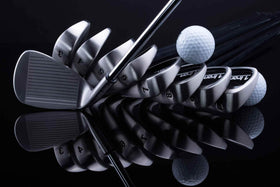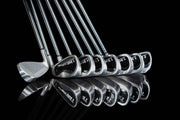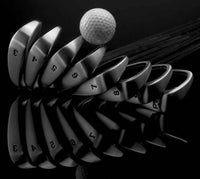Do Not Let Your Arms Interfere with Your Golf Swing
by David Lake
You have read in many of my past newsletters the concept of letting the arms just go along for the ride during the golf swing. What this means is that you want your arms to be relaxed and free of any tension throughout the entire swing motion – they should simply transfer the power generated by the rotation of your torso. The problem that most golfers have in trying to generate extra distance is that they unconsciously flex their upper arms and forearms at address which carries through their entire swing and actually reduces their swing speed as well as lessening their control. Admittedly, this flexing action feels very powerful but in reality it destroys the transfer of your true power which is generated by the rotation of your torso around your hips.
The culprit is what I refer to as the "opposing muscle concept." In other words, the bicep and forearm muscles of your right arm are flexing in direct opposition to the bicep and forearm muscles of your left arm. In addition, the more one arm flexes the more the other arm flexes in response. This flexed muscle opposition has the effect of freezing your arms in place which does not allow for a free and fluid swing movement let alone the ability to act as a conduit of power from your torso to the golf club.
Try the following simple experiment to see exactly what I am talking about. Hold a book between your hands as if you were holding a golf club at address. You will notice that your elbows point out to the sides. Bring the book straight up in front of you and you will feel the tension in your upper arms and forearms as your hands push together in order to keep the book from falling. You will also notice the tension created in your chest as your arms are pushing towards each other. Now swing the book to each side and you will definitely notice the restricted and uncoordinated feeling that the movement generates. This is what is happening in your golf swing although you are not consciously aware of it because you have not concentrated on it before. You will also note that the tension in your arms continues to increase because as the flexing of the muscles of one arm increases the muscles of the other arm respond in kind. It is important to understand that they flex in direct opposition to each other.
The solution to this power and control robbing problem is to eliminate the direct opposition of your arms from your address position and swing. Take your normal address position holding a driver and note that your elbows tend to point out to the sides although not as prominently as they did when you were holding the book in the earlier experiment. Obviously, the more your elbows are pointing outwards the more the inside of your arms are facing each other which is the root of muscle opposition. Still holding the club, rotate both arms so that your elbows are pointing in more of a downward position. You will feel your upper arms pressing against and even constricting your chest on either side and the inside of your elbows are now facing in a more upwards position. You will also notice the lack of tension in your arms which is the result of the muscles of your arms not being able to flex against each other. This position drastically reduces the amount of muscle opposition and enhances the ability to make a fluid golf swing with maximum power transfer.
Before we go any further let me make it clear that it is impossible to hold onto a golf club in a position where the insides of your elbows are pointing perfectly straight up and the outside of your elbows pointing perfectly straight down. However, to the extent that you can come close to this position the better.
This is something that you will have to practice at the range because a new fluid and powerful swing will definitely require you to develop a new feel and timing. Initially you will feel that this golf swing is not as powerful which is to be expected since you are not feeling the flexing action of the muscles in your arms. But believe me; your swing speed will immediately jump up five to ten mph and then increase beyond this as your non-opposing swing becomes more ingrained. And remember – just let your arms go along for the ride.










